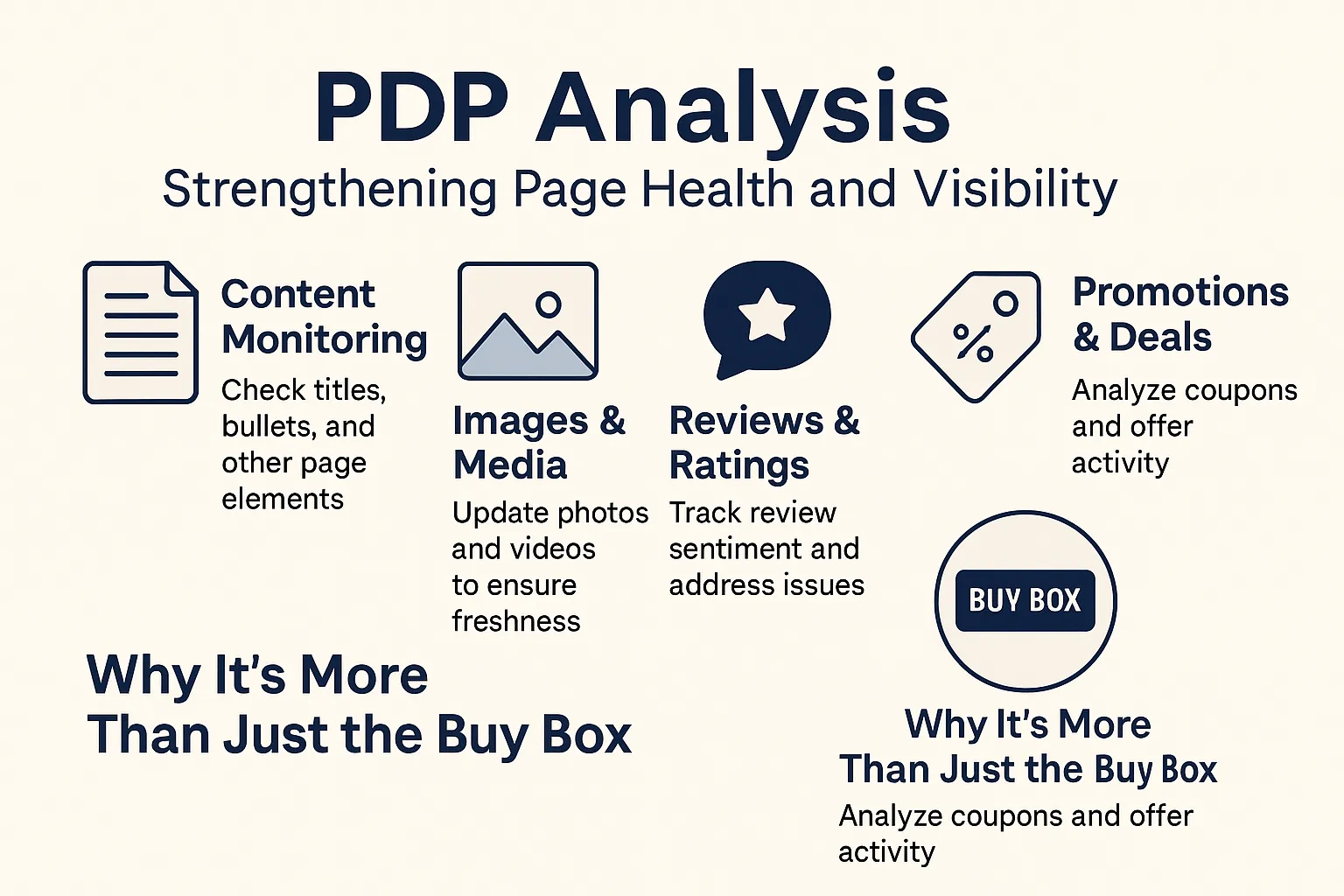- Perfality
- September 11, 2025
- 11:00 am
- Read Time: 5 mintues
Open Amazon, click through a few product pages, and you’ll see it: some feel alive, others feel forgotten. The difference usually isn’t the product. It’s how the product detail page (PDP) is looked after. This page is your storefront. People glance at it, make a snap judgment, and either add to cart or walk away. If it looks messy, uses old photos, or the Buy Box is missing, sales fall. That’s why sellers who stick to PDP Analysis and regular amazon buybox monitoring avoid surprises — they’re not scrambling after the damage is done.
Why It’s More Than Just the Buy Box
The Buy Box gets attention, and fair enough — it’s important. But focusing only on it is like judging a store by the checkout counter. A PDP is made of many signals that together decide whether someone buys.
Here’s what a proper check should include:
- Content Monitoring – Even minor adjustments in product titles or bullet points can subtly influence search rankings. Rivals frequently use this tactic to gain an edge.
- Images & Media – Fresh lifestyle photos or short videos make a product feel current. If theirs look newer than yours, shoppers notice.
- Reviews & Ratings – Repeated complaints aren’t just noise. They’re a warning. Ignore them and conversions dip.
- Stock Signals – Low-stock flags or frequent outages make buyers nervous and open the door for someone else.
- Promotions & Deals – Coupons, lightning offers, and timed discounts shift attention fast. Miss them, and you hand over traffic.
Amazon buybox monitoring is part of this, but it’s just one checkpoint. PDP Analysis tells you why shoppers stay, leave, or convert.
Where Sellers Trip Up
The truth is, most brands don’t lose because their products are bad. They lose because they weren’t watching closely.
- Some only check the Buy Box after sales drop.
- Others rewrite copy but ignore that competitors refreshed their visuals.
- Many watch reviews but forget Promotions & Deals that quietly steal attention.
You can see it play out in real life:
- Content Monitoring shows a rival slipping in trending keywords.
- Images & Media scraping reveals their page looks modern, yours doesn’t.
- Reviews & Ratings highlight packaging complaints you haven’t fixed.
- Stock Signals warn of inventory gaps that risk losing the Buy Box.
- Promotions & Deals scraping shows rivals offering discounts you missed.
Amazon buybox monitoring tells you who has the button. With PDP Analysis, you uncover why buyers hesitate, exit, or move forward with an order.
How Perfality Helps
At Perfality, we’ve worked with brands that lost thousands simply by not paying attention. Our approach links amazon buybox monitoring with broader PDP Analysis. That means checking content shifts, competitor Images & Media, sentiment from Reviews & Ratings, inventory health via Stock Signals, and competitor Promotions & Deals.
It’s not about collecting endless data. It’s about spotting risks before they become losses. Clients who use this structure usually see steadier Buy Box control, healthier pages, and far fewer “panic moments” when sales suddenly fall.
Making It a Habit
Amazon changes quickly. A week without monitoring can mean a competitor undercuts your price, refreshes their visuals, or launches a timed deal. Sellers who make PDP Analysis and amazon buybox monitoring part of daily work don’t just react — they get ahead.
Final Word
Success on Amazon isn’t luck. It’s habits. Amazon buybox monitoring keeps you aware of who’s winning the sale. PDP Analysis — with Content Monitoring, Images & Media, Reviews & Ratings, Stock Signals, and Promotions & Deals — makes sure your page is strong enough to keep it. With Perfality, you’re not just watching numbers move. You’re acting before issues cost you revenue. That’s how product page management becomes an advantage, not a fire drill.






